Discovering Key Healthcare & MedTech Mobile App Features
 17 November 2023
17 November 2023Within the ever-evolving healthcare and MedTech industries, the need for innovative and efficient mobile app features remains paramount. The development and implementation of these features must be streamlined, ensuring the highest quality of healthcare technology solutions reaches medical professionals and patients alike.
Their proprietary approach, known as the “TAP” process, has been a significant contribution to MedTech app development, pledging real-time project access, budget oversight, and transparency. Acclaimed clients, including Franciszek Czachorowski of Hematoonkologia.pl, have recognized their immense value as reliable partners in healthcare technology.
Key Takeaways
- Innovative Healthcare & MedTech mobile app features are crucial for effective patient care and professional success
- Streamlined medical app development processes ensure the highest quality of healthcare technology solutions reaches users
- Leading companies like Droids On Roids offer comprehensive services in MedTech app development
- The “TAP” process, pioneered by Droids On Roids, delivers real-time project access, budget oversight, and transparency for clients
- Successful healthcare app development includes a strong focus on UX/UI design, app maintenance, and platform compatibility
Our experts can build a feature-rich mobile app to meet your specific medical or health management needs. Schedule a free consultation.
Revolutionizing Patient Care With Cutting-Edge Mobile App Features
The healthcare sector is benefiting from rapid digital innovation, prompting the integration of mobile healthcare, or mHealth, to enhance patient care and support medical professionals in organizing their work more efficiently. Mobile healthcare includes features such as remote medical assistance, consultation availability, and the management of patient records digitally.

The COVID-19 pandemic underscored the importance of mobile apps, which supported the safe continuation of medical services, particularly for patients with chronic illnesses or those requiring uninterrupted care. Digital tools have promptly been adopted, with 74% of patients showing satisfaction with these services according to Accenture. Key cutting-edge mobile app features revolutionizing patient care include:
- Remote medical consultations
- Prescription management
- Personal health record management
- Appointment scheduling
- Disease and medication tracking
- Electronic health information exchange
As healthcare app innovation progresses, developers continue to focus on leveraging technology to provide streamlined, intuitive solutions that cater to patient needs while enabling better coordination and communication among medical professionals. The future of healthcare app development promises increased accessibility, efficiency, and security in the way medical services are delivered and experienced.
The Role of Telemedicine Apps in Modern Healthcare
Telemedicine apps are revolutionizing the healthcare industry by allowing patients and doctors to conduct consultations remotely. They provide access to medical care across geographies, enhance the quality of care, and eliminate the need for unnecessary travel to medical facilities. They empower patients to manage their health efficiently by scheduling appointments and accessing medical reports anytime.
Enabling Remote Consultations
Remote medical consultations have become an integral part of modern healthcare solutions due to their convenience and accessibility. By connecting patients with healthcare professionals virtually, telemedicine apps help alleviate the burden on overcrowded medical facilities while ensuring the continuity of care for patients who are unable to visit a doctor physically.
“Telemedicine is a practical and cost-effective way for individuals in rural or remote areas to receive consistent and high-quality medical care.”
Facilitating Continual Care Management
These telemedicine applications prove extremely beneficial for continual care management, offering features for online consultations, health condition monitoring through tests and trackers, and medication management. They are particularly useful for those in outpatient treatment or who need constant medical attention, demonstrating the dual adoption by patients and healthcare professionals due to their comprehensive offerings.
| Telemedicine App Features | Benefits |
|---|---|
| Online Consultations | Convenient and accessible medical services irrespective of location |
| Health Condition Monitoring | Keep track of vital health parameters and detect potential issues early |
| Medication Management | Ensure timely and accurate consumption of prescribed medications |
| Patient Health Tracking | Enables healthcare professionals to have a holistic view of patient health |
In summary, telemedicine apps have become essential components of modern healthcare by enabling remote medical consultations, facilitating continual care management, and offering tools for health condition monitoring and patient health tracking. The integration of these functionalities empowers patients and healthcare providers to optimize the care process and achieve better health outcomes.
Security & Compliance: Ensuring Data Protection in Healthcare Apps
Mobile apps in healthcare prioritize robust healthcare data security and healthcare app compliance to safeguard sensitive health information. These measures are instrumental in ensuring patient data protection, a fundamental aspect of patient trust and legal adherence. Standards of security and compliance are established to manage and protect the extensive quantities of personal health data being generated and shared.
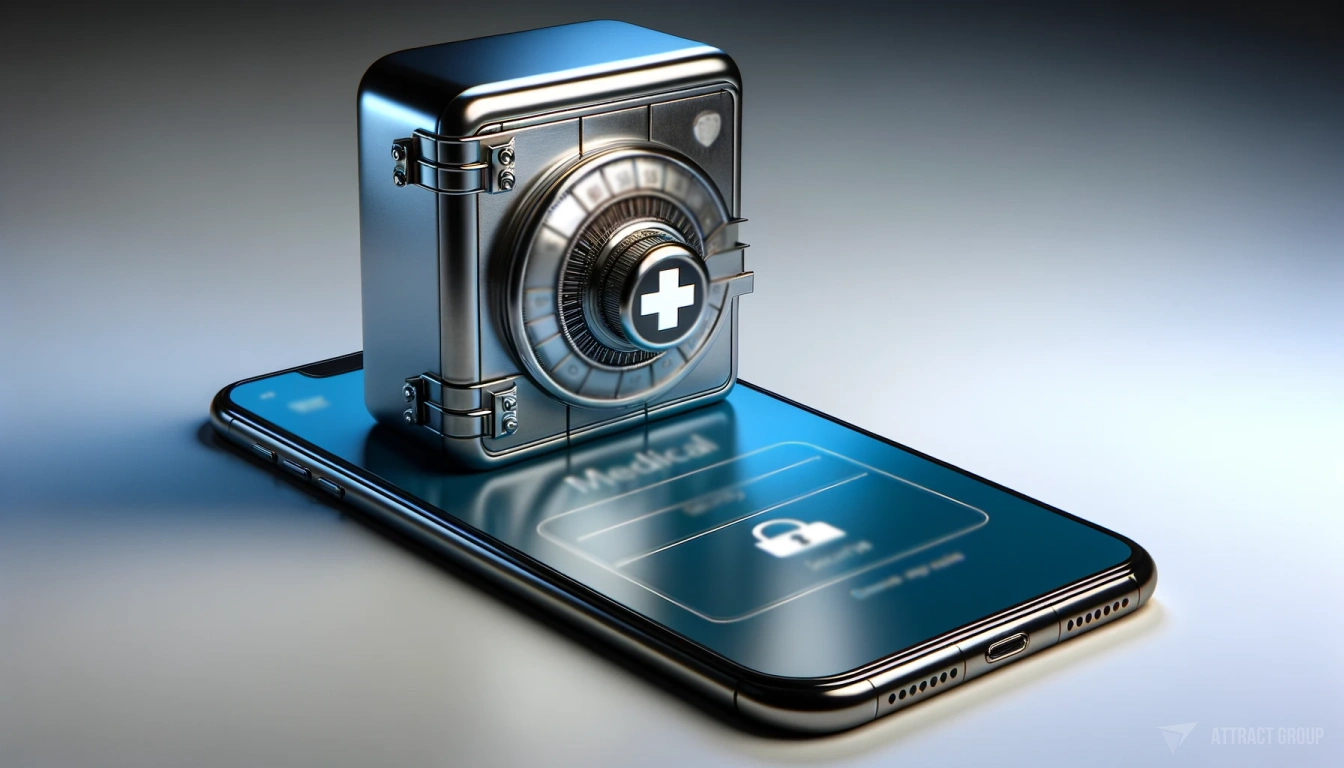
In this section, we explore key security standards and best practices that contribute to the protection and regulation of sensitive health information in healthcare apps.
“Security and compliance are the cornerstones of patient trust in a digital healthcare environment.”
- Establishing a security-first approach in app development
- Implementing end-to-end encryption for data transmission
- Strengthening authentication and authorization processes
- Regularly conducting security audits and vulnerability assessments
- Adhering to regulatory standards and frameworks
Security Standards and Frameworks
Several security standards and frameworks have been developed to regulate and guide the protection of healthcare data. Compliance with these standards is essential for any healthcare app seeking to establish credibility and ensure data security. Some widely recognized security and compliance standards include:
- HIPAA (Health Insurance Portability and Accountability Act)
- HITECH (Health Information Technology for Economic and Clinical Health Act)
- GDPR (General Data Protection Regulation)
- ISO 27001 (Information Security Management System)
Key Security Practices in Healthcare App Development
Below is a summary of crucial security practices that should be incorporated into the healthcare app development process:
| Security Practice | Description |
|---|---|
| Security-First Approach | Integrating security into all phases of app development, ensuring that security risks are proactively addressed and minimized. |
| End-to-End Encryption | Securing data transmission between users and service providers by employing encryption methods that protect information from unauthorized access. |
| Authentication and Authorization | Utilizing strong user authentication methods and implementing role-based access control mechanisms to prevent unauthorized access to sensitive patient data. |
| Security Audits and Vulnerability Assessments | Conducting regular security audits and assessments to identify potential risks and vulnerabilities in the healthcare app infrastructure, then working to promptly address these issues. |
| Regulatory Compliance | Adhering to relevant security standards and frameworks within the healthcare industry, such as HIPAA and GDPR, to ensure the app is operating within the confines of the law and maintaining best practices for data protection. |
By incorporating these security measures and practices, healthcare app developers can ensure that their solutions prioritize data protection and regulatory compliance, ultimately building trust and confidence among patients and medical professionals.
Improving Healthcare Accessibility Through Mobile Solutions
Today’s diverse and digitally connected world demands healthcare solutions that cater to various patient demographics. Healthcare accessibility is a significant concern, and mobile health applications are one way of creating accessible and simplified medical care services featuring user-friendly design, diverse patient support, and healthcare app inclusivity.
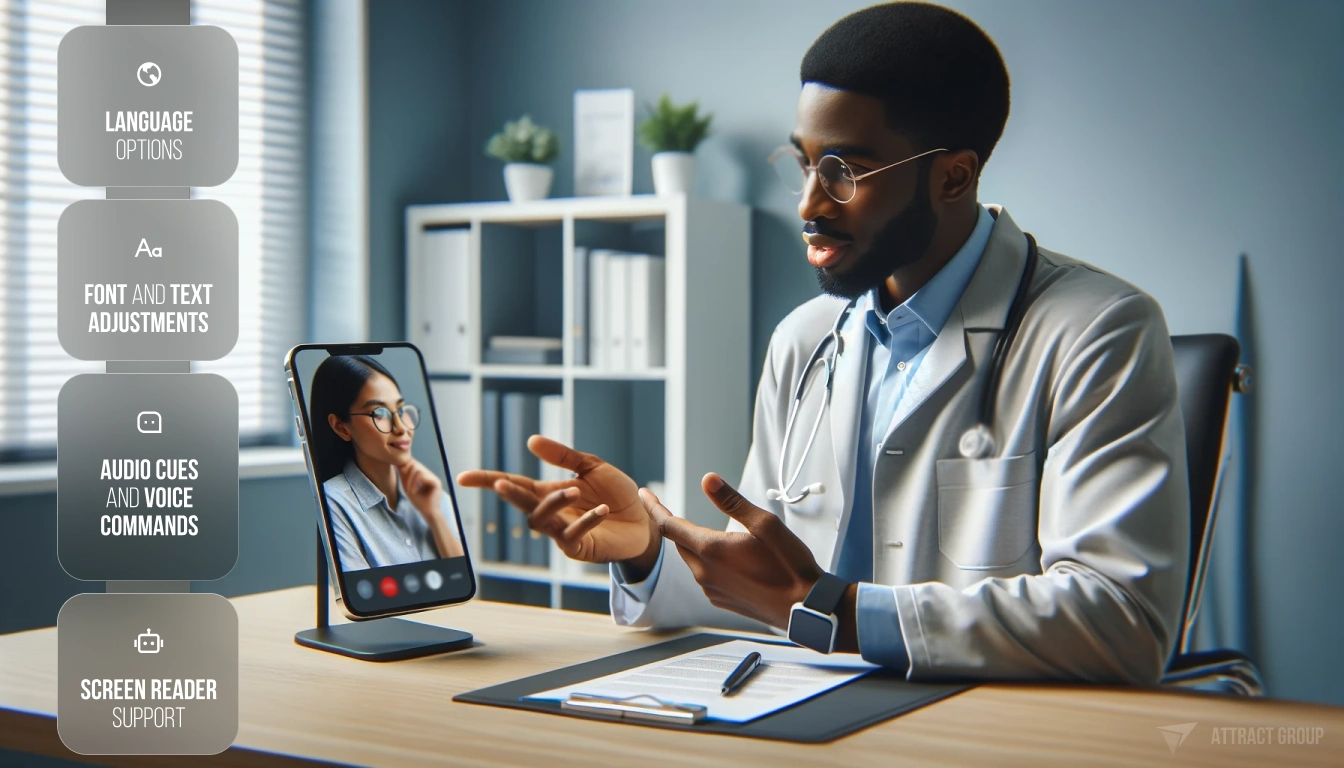
User-Friendly Design for Diverse Patient Demographics
Mobile healthcare applications are developed with user-friendly design at the forefront to ensure the ease of use for all patients. Through intuitive interfaces and straightforward navigation, users with varying levels of technical proficiency can access medical services and manage their health more efficiently. Additionally, designers often consider age, digital literacy levels, and ease of use for those with existing medical conditions, improving overall healthcare accessibility for all demographics.
“The most important aspect of developing healthcare applications is designing for our diverse patient base: Young, old, tech-savvy and not. By focusing on user-friendly design, we ensure everyone can benefit from our medical solutions.” -Tim Smith, Healthcare App Designer.
Multilingual Support and Accessibility Options
Beyond user-friendly design, mobile healthcare applications must cater to users from various backgrounds, languages, and abilities. Multilingual support and mobile app accessibility options have become essential components for healthcare app inclusivity. Applications that provide multilingual functionality and accessible design features contribute to breaking down barriers to healthcare and making medical care more available for everyone.
- Language options: Support for multiple languages, ensuring users from various linguistic backgrounds can understand and utilize the medical services provided.
- Font and text adjustments: Text resizing and contrast options to accommodate users with vision issues.
- Audio cues and voice commands: Allowing users with limited mobility or visual impairments to interact with the app using verbal commands or audio cues.
- Screen reader support: Compatibility with screen reader software for visually impaired users.
In conclusion, mobile healthcare solutions play a vital role in improving healthcare accessibility for diverse patient demographics worldwide. By emphasizing user-friendly design, multilingual support, and accessibility options, these applications work to ensure that a wider population can benefit from and manage their health with ease.
Navigating the Integration of Wearable Technologies with MedTech Apps
The use of wearable technology has made significant strides in recent years. With increasing advancements, these devices are becoming an essential part of the healthcare landscape. MedTech apps play a crucial role in enhancing the functionality of wearable devices, providing users with a seamless and efficient health tracking experience.
Real-Time Health Monitoring and Data Syncing
One of the primary benefits of integrating wearable technology with MedTech apps is the ability to perform real-time health monitoring. These apps can collect data from wearable devices such as fitness trackers, smartwatches, and specialized medical wearables. The information gathered from these devices can empower users with a deeper understanding of their health and enable medical professionals to make more informed decisions about patient care.

Data syncing in MedTech apps connects wearable devices to a central platform, effortlessly updating health information for users and healthcare providers. With timely access to data, users can monitor their health parameters while healthcare professionals can quickly assess and respond to changes in a patient’s health status.
“Wearable technology integration adds another dimension to the healthcare experience, providing users with real-time monitoring and data syncing, leading to more personalized and efficient healthcare management.”
- Wearable devices, such as smartwatches and fitness trackers, offer a convenient way to track a wide range of health information.
- MedTech apps receive data from wearable devices, making real-time health monitoring possible.
- Data syncing ensures that healthcare professionals have access to accurate and up-to-date health information for more effective decision-making.
| Wearable Device | Health Parameters Monitored |
|---|---|
| Fitness Trackers | Steps, heart rate, sleep patterns |
| Smartwatches | Heart rate, oxygen saturation, electrocardiograms |
| Specialized Medical Wearables | Blood glucose, blood pressure, respiratory rate |
Let our team of specialists handle wearable integration, leveraging real-time data syncing to enhance your healthcare app capabilities.
The integration of wearable technology with MedTech apps offers substantial benefits through real-time health monitoring and data synchronization. It allows healthcare providers to make informed decisions based on up-to-date information, ultimately leading to better patient outcomes and improved overall health management.
The Impact of AI and Machine Learning on MedTech Mobile Apps
Artificial Intelligence (AI) and Machine Learning have emerged as transformative forces in the MedTech industry, reshaping how mobile apps deliver healthcare solutions. These cutting-edge technologies are driving innovations in predictive analytics, personalization, and enhanced diagnostic procedures for a more accurate, personalized, and efficient healthcare experience.

AI-powered mobile apps allow for better analysis of vast amounts of medical data, enabling healthcare providers to make more informed decisions and improve patient outcomes. Machine learning algorithms allow these apps to adapt and evolve, augmenting clinical decision-making and assisting with diagnosis. The impact of these technologies on MedTech mobile apps can be observed in the following areas:
- Predictive Analytics: AI-driven apps can analyze patient data to identify patterns and predict potential health risks, alerting healthcare providers to intervene proactively. This can lead to better disease prevention and more targeted treatments.
- Personalization: Machine learning algorithms can tailor app experiences to individual users, offering personalized healthcare plans, recommendations, and support based on their specific needs, behavior, and medical history. This enhances patient engagement and improves overall health management.
- Enhanced Diagnostic Procedures: AI-powered diagnostic tools can analyze medical imagery and biosignals with greater accuracy and speed than traditional methods. These tools can support physicians in making timely, precise diagnoses, which may significantly impact patient prognosis and treatment planning.
AI in healthcare is transforming the MedTech mobile app landscape, bringing increased accuracy, personalized care, and more efficient diagnostic procedures to benefit both patients and healthcare providers.
As AI and Machine Learning continue to advance, their role in MedTech mobile app innovation will only expand, shaping the future of healthcare delivery. By integrating these technologies into the mobile health ecosystem, healthcare providers can unlock new possibilities for improved patient care, reduced healthcare costs, and a more streamlined healthcare experience overall.
User Experience: Designing for Healthcare App Usability
The rapid growth of the healthcare app industry puts a significant emphasis on the importance of user experience (UX) in healthcare. A core element of UX is creating a user-friendly interface that caters to the unique needs of individual patients and streamlines their experience within the app. In this section, we will discuss two fundamental aspects of healthcare app usability: patient-centric interface design and simplifying navigation to promote better user adoption.
Patient-Centric Interface Design
A patient-centric interface design prioritizes the needs and behaviors of users, ensuring that healthcare apps are intuitive and effectively meet medical and health management requirements. Designing with the user’s perspective in mind ensures a seamless experience and helps in increasing healthcare app adoption. Here are some key aspects to consider for patient-centric interface design:
- Easy-to-read fonts and an uncluttered layout
- Consistent design elements and clear call-to-actions
- Interactive graphs and charts for better data visualization
- Responsive design, adapting to various devices and screen sizes
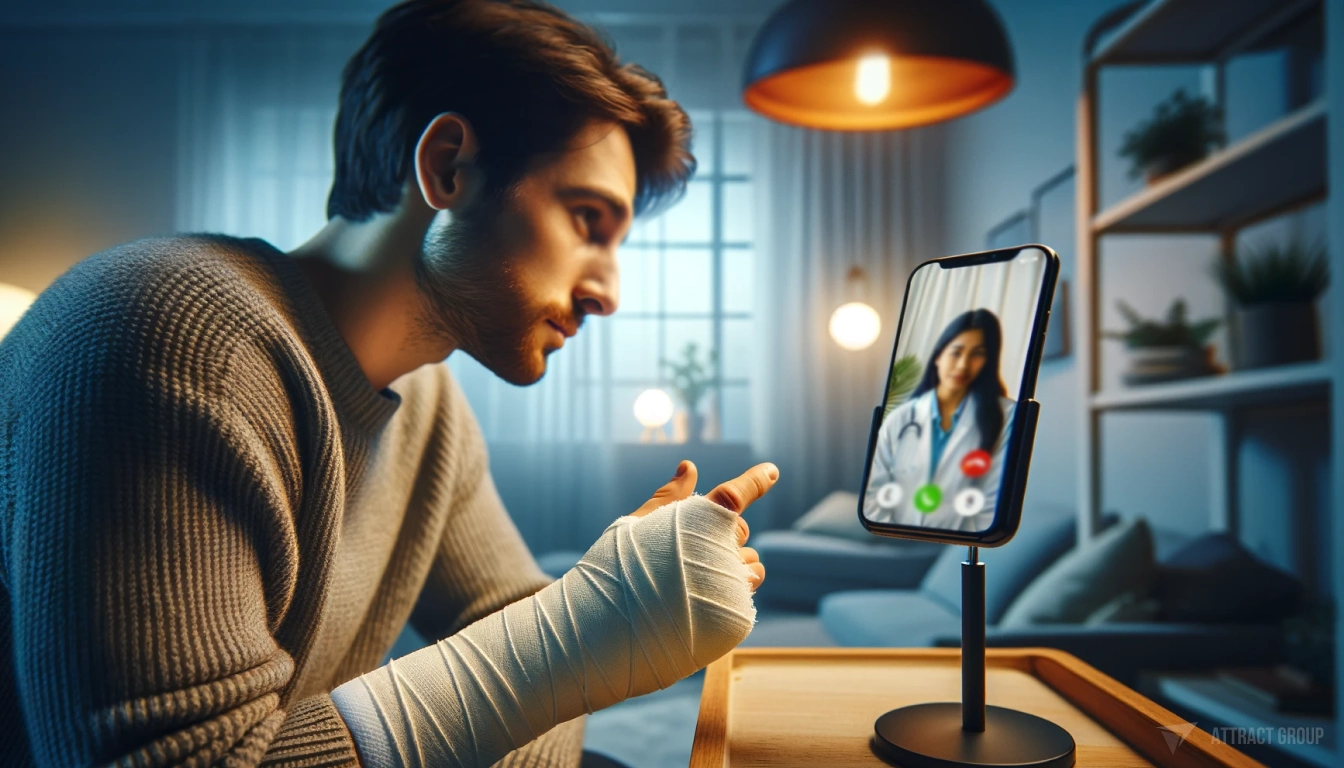
Simplifying Navigation for Better User Adoption
A simplified navigation system facilitates the onboarding of users of all tech proficiency levels, promoting widespread adoption of healthcare apps by making them more approachable and easy to use. Here are some strategies for simplifying app navigation:
- Create a clear and logical information architecture to reduce cognitive load
- Organize similar functions into their groups to ease discoverability
- Include a search function to enable quick and efficient navigation
- Design intuitive and informative icons to guide users through the app
- Minimize the number of steps required to complete a task
“Good user experience just makes sense: it’s how we design our ports and airports, our supermarkets and our emergency exits in a way that they’re so intuitive that people can use them without even thinking about it.” – Caroline Criado Perez, author of “Invisible Women: Data Bias in a World Designed for Men”
In conclusion, designing healthcare apps with usability in mind is essential for user satisfaction and widespread adoption. By focusing on patient-centric interface design and simplifying app navigation, developers can create user-friendly healthcare technology that caters to the needs of users, drives the growth of healthcare app usage, and ultimately revolutionizes the delivery of healthcare services.
Mobile App Personalization: Catering to Individual Healthcare Needs
Personalization is a core feature of healthcare apps that enables the tailoring of healthcare experiences to individual preferences and needs. Customized MedTech and individual healthcare solutions offer greater relevance and value to the user, potentially leading to better health outcomes and user satisfaction.
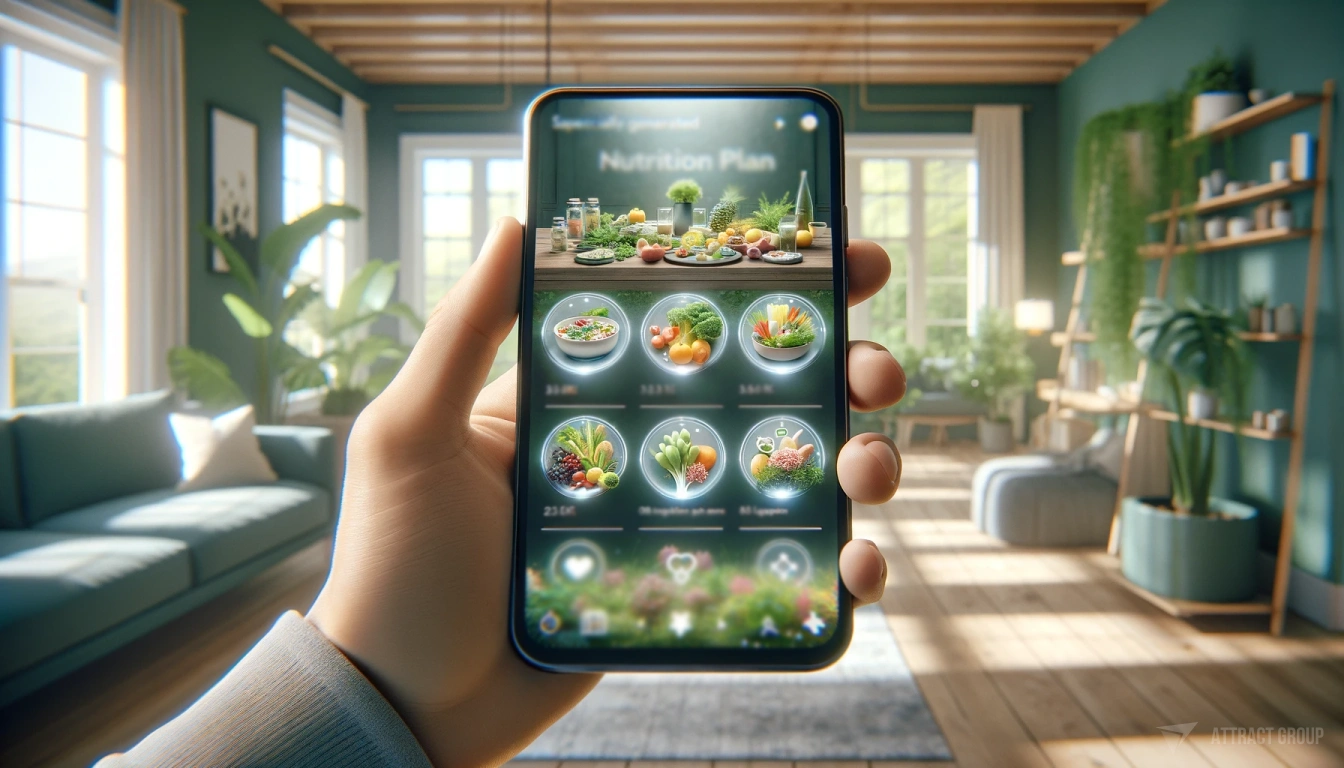
To illustrate the significance of mobile app personalization in healthcare, consider the following examples of personalized features commonly found in healthcare apps:
- Patient-specific health recommendations
- Customized exercise and nutrition plans
- Reminders for medication and appointments tailored to a user’s schedule
- Progress tracking with personalized goals and milestones
These features make it possible for healthcare apps to cater to the unique needs of each user, taking into consideration factors such as age, medical history, lifestyle, and preferences. As a result, users can experience a more comprehensive and relevant approach to managing their health.
“The personalization of healthcare apps empowers users to take control of their health by providing tailored tools and resources that address their specific needs.”
Implementing mobile app personalization requires a deep understanding of users and their needs. Developers achieve this by leveraging data analytics, user feedback, and continuous app improvement. This approach ensures that the app remains sensitive to evolving user preferences, further enhancing the user experience.
Below is a table illustrating the different levels of personalization and the corresponding benefits for users and healthcare providers:
| Level of Personalization | User Benefits | Healthcare Provider Benefits |
|---|---|---|
| Basic |
|
|
| Intermediate |
|
|
| Advanced |
|
|
With the continuous advancement of technology, mobile app personalization will play an increasingly vital role in shaping individual healthcare solutions. As developers continue to innovate and refine healthcare app features, users can expect an even more personalized experience, leading to better health outcomes and satisfaction.
Interoperability Challenges in Healthcare App Development
With the increasing emphasis on digital transformation within the healthcare industry, effective communication between various systems and platforms has become essential. Interoperability in healthcare refers to the ability of healthcare apps to seamlessly exchange data across different platforms and systems, enabling comprehensive care coordination. However, healthcare app development faces a unique set of challenges that must be overcome to achieve this level of seamless data exchange.

Facilitating Seamless Data Exchange
One of the main issues hindering the development and implementation of interoperable healthcare apps is the need to navigate complex data standards and integration requirements. Healthcare organizations rely on a range of distinct data standards, including HL7, IHE, and FHIR, each with its complexities and specifications. As a result, creating a healthcare app that can seamlessly communicate with multiple platforms requires expertise in various data standards and a deep understanding of the intricacies involved in data integration.
“An efficient healthcare app that facilitates seamless data exchange requires a deep understanding of complex data standards, integration requirements, and proper implementation of security protocols.”
Additionally, it is essential to adhere to strict privacy regulations and ensure robust security measures when developing interoperable healthcare apps. This involves implementing robust data encryption techniques, secure user authentication, and thorough data audit trails to protect sensitive patient information.
Developing an interoperable healthcare app can be fraught with challenges. Some of the main factors that present healthcare app development challenges include:
- Identification of relevant standards and integration requirements.
- Expertise in using various data standard APIs and ensuring compatibility across systems.
- Addressing unique medical data complexities, such as differing terminologies and codes.
- Implementing secure data storage and transfer mechanisms to maintain patient data confidentiality.
- Assuring timely system updates to accommodate changes in industry standards.
In conclusion, achieving seamless data exchange between healthcare apps and various systems and platforms is crucial for efficient care coordination. However, healthcare app development must overcome numerous challenges, including complex data standards and security requirements. As developers continue to innovate and improve interoperability, the industry will benefit from enhanced collaboration and more efficient patient care.
Healthcare App Analytics: Tracking Usage for Continuous Improvement
Healthcare app analytics play a crucial role in understanding user behavior, monitoring app performance, and identifying areas for improvement. By tracking app usage and user interaction patterns, developers and healthcare organizations can continuously refine the functionality and user experience of their healthcare apps, ensuring optimal performance and user satisfaction.
- Data-driven decision making: Analytics enable developers to make informed decisions based on real-time data about user behavior, resulting in more targeted improvements to app features and user experience.
- Performance Monitoring: Consistent attention to app performance allows for timely identification of app crashes and bugs, driving prompt resolution and a smoother experience for users.
- User Engagement and Retention: Analyzing user engagement levels over time can highlight patterns and trends, informing strategies to increase user retention and active usage.
- ROI Measurement: Healthcare app analytics enable healthcare organizations to determine the return on investment from their app, measuring the value derived from user engagement, cost savings, and healthcare outcomes.
“Without data, you’re just another person with an opinion.” – W. Edwards Deming
A further benefit of healthcare app analytics pertains to gathering insights into the effectiveness of various app features and marketing campaigns. This data-informed approach can serve to direct the prioritization of resources, effort, and budget in the development and marketing of the app.
| Metrics | Description |
|---|---|
| New Users | Number of first-time users in a specific time period |
| Active Users | Number of users who open and interact with the app within a given time frame |
| Session Length | Average duration of user sessions |
| App Crashes | Number of times the app encounters an error and closes unexpectedly |
| Retention Rate | Percentage of users who continue to use the app after a given time period |
| Feature Adoption | Percentage of users utilizing a particular app feature |
Our dedicated analytics teams provide detailed monitoring, reporting, and optimization recommendations to improve healthcare app performance.
Healthcare app analytics empower developers and healthcare organizations to embrace a data-driven approach to app improvement. The insights gained are invaluable in refining app functionality and user experience, ultimately leading to a more comprehensive and engaging healthcare solution for users.
Driving Patient Engagement Through Gamification and Interactive Features
Healthcare apps are incorporating gamification and interactive features in their design to drive patient engagement and make health management more dynamic and enjoyable. By enhancing motivation and adherence to treatment plans, these features add an element of fun to routine health-related tasks. This section explores different types of interactive features that can be used in healthcare apps to boost patient engagement and overall satisfaction.
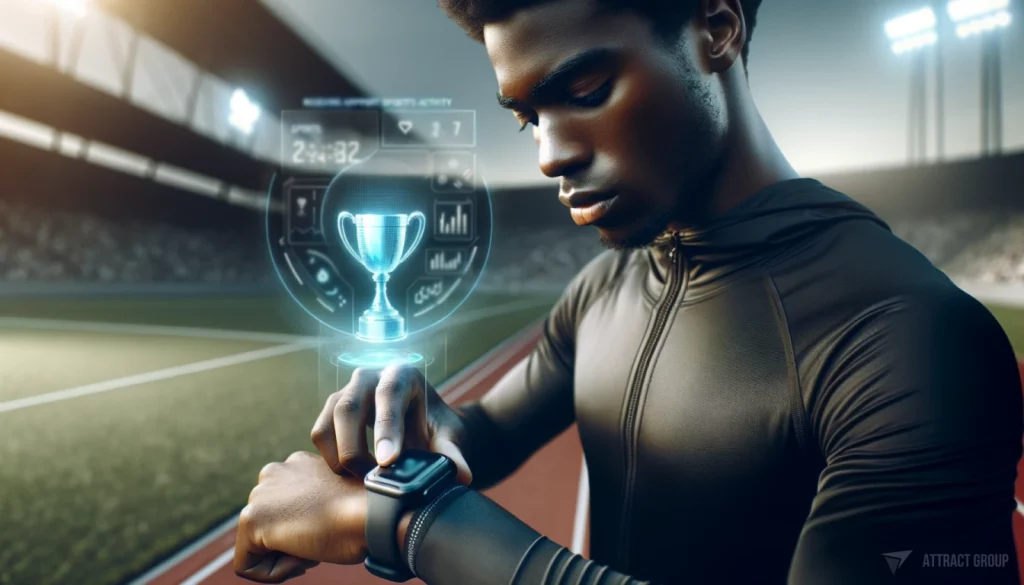
Several gamification techniques can make the healthcare app experience enjoyable while improving patient engagement:
- Rewards and incentives: Users can earn points, badges, and other rewards for completing tasks associated with their healthcare management.
- Progress tracking: Visual representation of a user’s progress towards health goals encourages continued engagement and motivation to achieve targets.
- Milestone celebrations: Celebrate achievements when users reach significant milestones in their health journey, offering encouragement and maintaining motivation.
- Competitions and challenges: Friendly competition between users can further motivate them to stay engaged with the app.
- Social features: Allow users to interact, support, and share their progress with others, creating a sense of camaraderie and community.
- Customizable avatars and profiles: Let users personalize their app experience by creating avatars, choosing themes, and customizing their profile.
- Interactive quizzes and assessments: Offer engaging and informative quizzes to test users’ knowledge and understanding of their health conditions and treatment plans.
- Health-related games: Incorporate mini-games that not only entertain users but also promote healthy habits and behaviors.
- Chat interfaces and virtual support: Provide users with instant access to support and advice from healthcare professionals, chatbots, or fellow users.
- Scheduling and reminders: Design app features to help users manage their healthcare routines effectively, such as medication reminders, exercise schedules, and health appointment tracking.
“Gamification and interactive features within healthcare apps drive patient engagement by making health management more dynamic and enjoyable.”
By incorporating gamification and interactive features into healthcare app design, developers can create a more engaging and enjoyable user experience. This approach promotes patient adherence to treatment plans, encourages healthier habits, and leads to better health outcomes, ultimately advancing the overall quality of patient care.
Conclusion
As the MedTech mobile app development landscape continues to evolve, the importance of implementing advanced healthcare app features becomes increasingly apparent. The integration of cutting-edge technology and user-friendly designs and functions hold immense potential in shaping the future of healthcare technology. By providing more personalized, accessible, and seamless healthcare experiences for both patients and medical professionals, these apps are set to revolutionize the way care is delivered and managed.
By prioritizing user experience, security, and innovative technologies such as AI and wearable integration, healthcare app developers are responding to trends and needs within the industry. This commitment to continuous improvement ensures that the healthcare sector remains one step ahead, enabling valuable advances in patient care and satisfaction levels.
With our full-service healthcare app development, we can build the innovative medical solutions you need to transform patient care
As we move forward, keeping abreast of emerging trends and understanding the ever-changing dynamics of patient needs and preferences will be essential for sustained success in the healthcare technology sector. The combination of sophisticated mobile solutions and dedicated professionals promises a brighter, more connected, and efficient future for healthcare.
FAQ
What are some key features of Healthcare & MedTech mobile apps?
Some key features include remote medical consultations, real-time health monitoring, AI integration, user-friendly design, personalization, and wearable technology integration.
How are telemedicine apps transforming modern healthcare?
Telemedicine apps enable remote consultations and facilitate continual care management, allowing patients and doctors to conduct consultations remotely, monitor health conditions, and manage treatments. These apps provide access to medical care across geographies, enhance the quality of care, and eliminate the need for unnecessary travel to medical facilities.
How do mobile healthcare apps ensure data security and compliance?
Mobile healthcare apps prioritize robust security measures and compliance with data protection regulations to safeguard sensitive health information. These measures include encryption, secure data storage, and adherence to relevant data protection laws and standards.
What features of mobile healthcare solutions improve accessibility for diverse patient demographics?
Features that enhance accessibility include user-friendly design, multilingual support, and various accessibility options to cater to users from different backgrounds and abilities.
How do wearable technologies integrate with MedTech apps for real-time health monitoring?
Wearable technologies, such as smartwatches and fitness trackers, gather health-related data and sync it with MedTech apps, enabling real-time health monitoring and data sharing between patients and healthcare professionals.
What roles do AI and machine learning play in MedTech mobile apps?
AI and machine learning enable predictive analytics, personalization, and enhanced diagnostic procedures. These technologies contribute to more accurate, personalized, and efficient healthcare solutions.
How do healthcare apps prioritize user experience?
By creating patient-centric interfaces, simplifying navigation, and offering customizations, healthcare apps ensure a more intuitive and user-friendly experience that caters to all users’ needs and preferences.
What are the interoperability challenges in healthcare app development?
Interoperability involves seamlessly exchanging healthcare data across various platforms and systems, requiring the navigation of complex data standards and integration requirements to facilitate comprehensive care coordination.
How do healthcare app analytics contribute to continuous improvement?
Analytics track usage patterns and user interactions, providing valuable insights into app performance and areas for enhancements. This data-driven approach informs ongoing improvements to app functionality and user experience.
What role do gamification and interactive features play in driving patient engagement?
Gamification and interactivity can enhance motivation and adherence to treatment plans by making health management tasks more dynamic and enjoyable, ultimately driving greater patient engagement.










